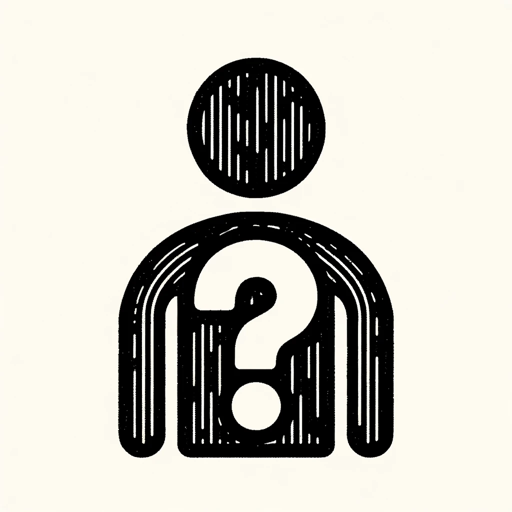潜在的顧客の不購入要因と施策-customer purchase behavior analysis tool.
AI-powered tool to identify purchase barriers.
Related Tools
Load More
Buyer Persona GPT for Sales
It's like a dynamic persona card! Enter a [Job Title + Company Name] to start strong strategizing an approach for this persona.

マーケ調査するぞ!
サービス特徴、3C分析、重点施策とスケジュールなどをアウトプットします。始めるには「開始する」を選択してください。

My Perfect Customer
Identify your perfect customer, and craft tailored content to convert them. To start, give me a companies website URL or provide information on the company.

Главные инсайты потребительского поведения 2023
Основано на глобальном исследовании Canvas8 о новейших трендах потребителей

市场调研分析助手
由「刘效宇」创建的市场调研分析助手,请输入需要分析调研的行业市场名称,将通过收集互联网公开信息为你进行市场背景分析

顧客維持率アップ
20.0 / 5 (200 votes)
Introduction to 潜在的顧客の不購入要因と施策
潜在的顧客の不購入要因と施策 is designed to identify reasons why potential customers might not purchase a product and propose actionable solutions. It applies marketing frameworks such as AIDMA (Attention, Interest, Desire, Memory, and Action) to analyze each stage of the consumer journey and offers strategies to resolve issues. For example, if a potential customer is unaware of a product (Attention), the platform suggests increasing exposure through advertising or collaborations. If customers know the product but don’t understand its benefits (Interest), free trials or use-case demonstrations are recommended.

Main Functions of 潜在的顧客の不購入要因と施策
Identifying Lack of Awareness
Example
If a new skincare product is not recognized by consumers, the platform will diagnose this as an 'Attention' issue under AIDMA.
Scenario
A skincare brand uses widespread advertisements and influencer partnerships to increase visibility and improve consumer attention to the product.
Enhancing Consumer Understanding
Example
A fitness app is known but misunderstood by users as too advanced. The platform suggests free trials to introduce potential users to its ease of use.
Scenario
The app organizes free online workshops and influencer reviews to showcase beginner-friendly features, increasing adoption.
Addressing Social Perception Barriers
Example
Men's cosmetics are often ignored due to social biases against male grooming. The platform flags this as a 'social norm' issue.
Scenario
The brand launches campaigns featuring celebrities using their products to challenge stereotypes and expand their market.
Ideal Users of 潜在的顧客の不購入要因と施策
Small and Medium Enterprises (SMEs)
SMEs looking to understand why their products are not resonating with target audiences can benefit from detailed consumer behavior analysis and actionable recommendations.
Marketing Agencies
Agencies can use the service to diagnose clients' product-related barriers and propose strategic solutions to improve brand awareness, customer retention, and conversion rates.

How to use 潜在的顧客の不購入要因と施策
Visit aichatonline.org for a free trial without login.
No need for ChatGPT Plus, making it accessible for everyone to explore instantly.
Identify your business product or service.
Begin by selecting the specific product or service you want to analyze in terms of potential customer resistance.
Use AIDMA model to pinpoint issues.
Explore customer journey stages—Attention, Interest, Desire, Memory, Action—to identify purchase barriers.
Analyze social barriers.
Examine societal norms such as age, gender, or experience that could discourage potential customers from buying.
Implement suggested strategies.
For each identified barrier, implement recommended actions, such as customer education, UI simplification, or targeted advertising.
Try other advanced and practical GPTs
Medical, Surgical, and Anesthesiology
AI-powered insights for anesthesia and surgery.

春联创作助手
AI-crafted couplets for your New Year

一臂攻略
AI-Powered Solutions for Every Task

攻城狮
AI-powered technical problem solver

美国试管咨询挂号约诊陪诊助手/信凯尔硅谷
AI-powered reproductive consultation and support.

红豆(nekopara-Azuki)
An AI-powered catgirl that bites back.

Vue2 Master
Optimize Vue 2 development with AI.

英文小帮手
AI-Powered English and Chinese Assistant

论文写手
AI-powered academic paper generator

成人话题
AI-powered intimate relationship advice.

AI短视频文案模仿器
AI-powered tool for authentic scriptwriting.

AI 痕迹检测器
AI-powered trace detection for genuine content

- Market Research
- Product Strategy
- Customer Analysis
- Social Trends
- Purchase Barriers
Q&A about 潜在的顧客の不購入要因と施策
What is the main purpose of this tool?
The tool helps businesses identify why potential customers may not be purchasing their products and provides tailored strategies to overcome those barriers.
How does the AIDMA model work here?
The AIDMA model is used to assess different stages of customer interaction—Attention, Interest, Desire, Memory, and Action—ensuring that each phase is optimized to drive purchases.
Can I use this tool for digital products?
Yes, it can analyze any type of product or service, whether digital or physical, to identify and address purchasing hurdles.
What are common societal barriers?
Common barriers include social perceptions based on age, gender, and status, which may prevent customers from engaging with your product.
Is there a focus on customer feedback?
Yes, the tool suggests strategies like reviews and testimonials to address concerns related to security, safety, or societal norms.